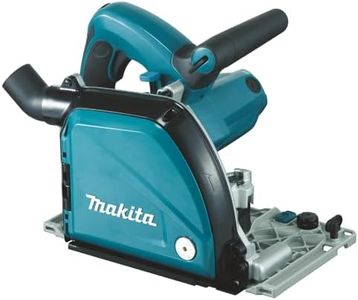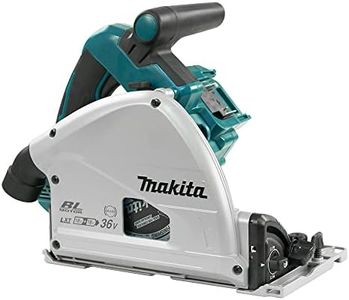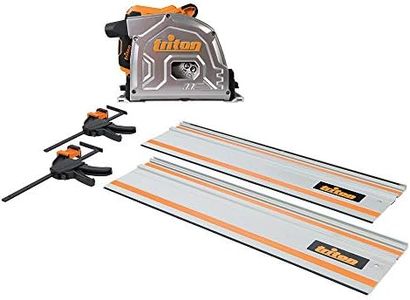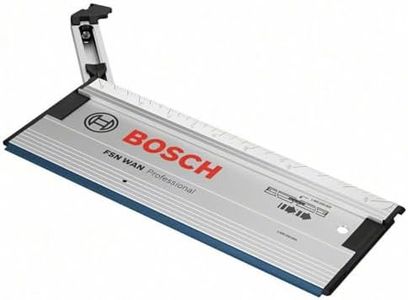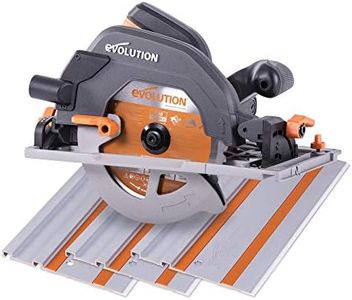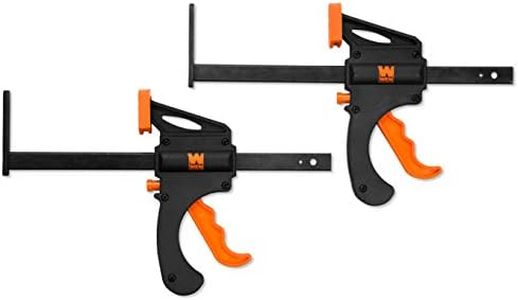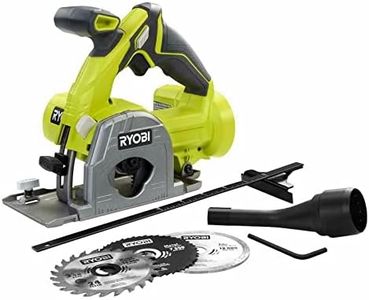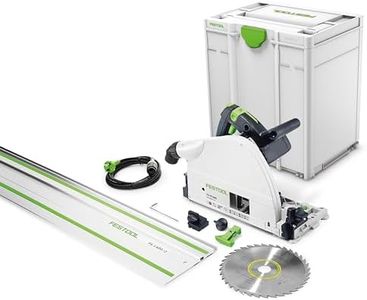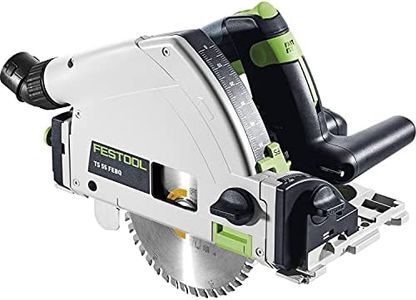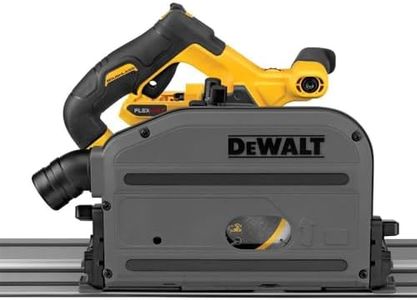We Use CookiesWe use cookies to enhance the security, performance,
functionality and for analytical and promotional activities. By continuing to browse this site you
are agreeing to our privacy policy
10 Best Track Saws
From leading brands and best sellers available on the web.Buying Guide for the Best Track Saws
Choosing the right track saw can make a big difference in the quality and efficiency of your woodworking or construction projects. A track saw is designed to make precise, straight cuts in wood and other materials by gliding along a specially designed track or rail. When shopping for a track saw, it's important to think about the types of projects you plan to tackle, how portable you need the tool to be, and the materials you wish to cut. Understanding the key specifications can help you find a model that matches your needs and ensures safety and accuracy in your work.Blade SizeBlade size refers to the diameter of the circular blade and is crucial because it determines the cutting depth and the types of materials you can tackle. Most track saws use blades between 6.5 to 7.25 inches. Smaller blades make saws lighter and easier to handle, which is great for portability and accuracy in thinner materials. Larger blades allow for deeper cuts, letting you tackle thicker boards in a single pass. If you mostly cut plywood and veneer, a smaller blade is usually enough. For working with thicker wood or making long, deep cuts, a larger blade size is better.
Cutting DepthCutting depth tells you how thick a material the saw can cut through in one motion, often measured at 90 degrees and sometimes at 45 degrees for bevel cuts. Shallower cutting depths, around 1.5 inches, are fine for thin stock or sheet materials. Deeper capacities, up to 2.5 inches or more, are needed if you want to cut thick hardwood or multiple boards stacked. Think about the thickness of the materials you usually work with when deciding what cutting depth suits you best.
Power Source (Corded vs. Cordless)The power source decides where you can use your saw and how long it runs. Corded track saws plug into an outlet, offering continuous power which is ideal for tough or prolonged jobs. Cordless models run on batteries, providing more mobility and ease of use in places without power access. Corded versions tend to be a bit heavier and stronger, while cordless models are more convenient but may need spare batteries for big tasks. Choose based on how often you'll be near a power source and whether you value freedom of movement.
Track LengthTrack length is the size of the guide rail that the saw runs on, and it determines the maximum straight cut you can make in one go. Short tracks, around 4 feet, suit smaller sheets or trimming doors. Longer tracks, up to 8 feet, are helpful if you regularly cut full-size plywood or longer boards. Some systems let you join tracks for flexibility. Consider what materials and lengths you'll work with, as the track size should allow for clean cuts in one sweep when possible.
Bevel CapacityBevel capacity is how far the saw can tilt (usually left or right) to make angled or beveled cuts. Most models tilt to at least 45 degrees, but some go further. A higher range gives you more versatility for tasks like making edges for joining or decorative trims. If your work includes angled cuts or you want flexibility for creative projects, choose a saw with a wider bevel capacity.
Dust Collection CompatibilityDust collection is about how well the saw handles the sawdust it creates. Many track saws have ports to connect vacuum hoses or dust bags, which helps keep your workspace cleaner and safer. Good dust control is especially important if you work indoors or in shared spaces. If you have allergies, work in a garage, or just want easy clean-up, prioritize a saw with effective dust collection features.
